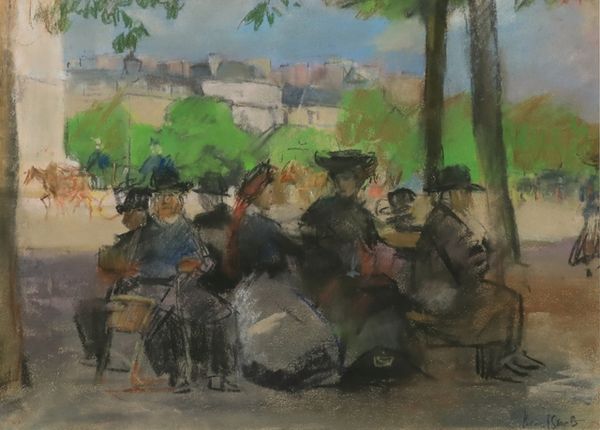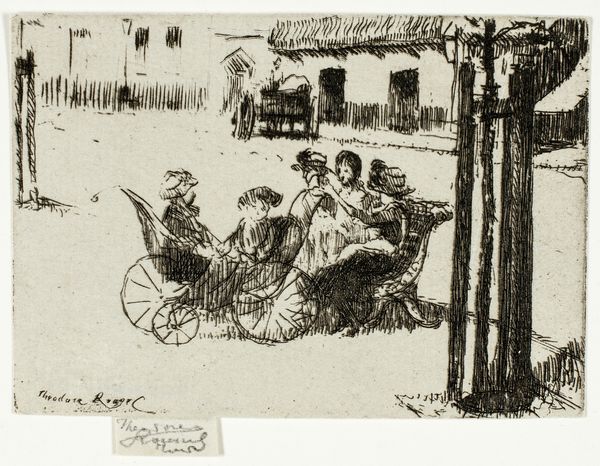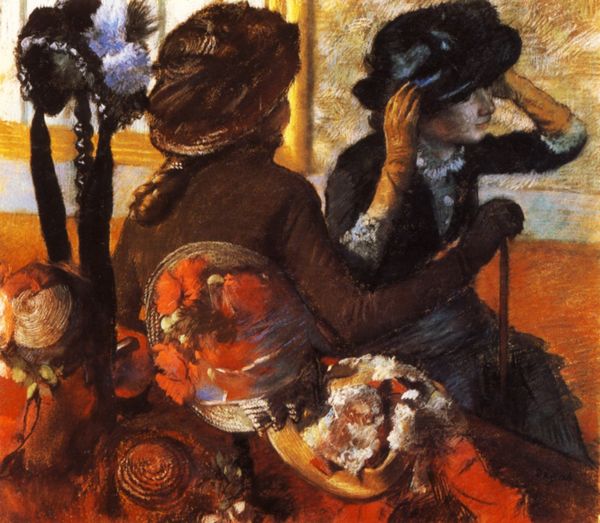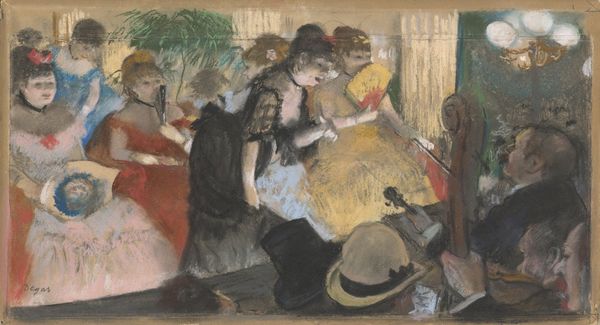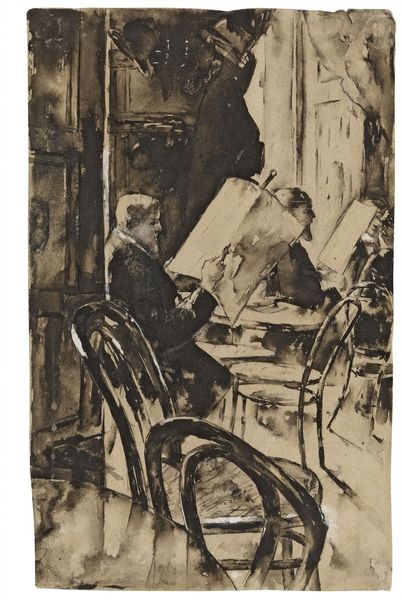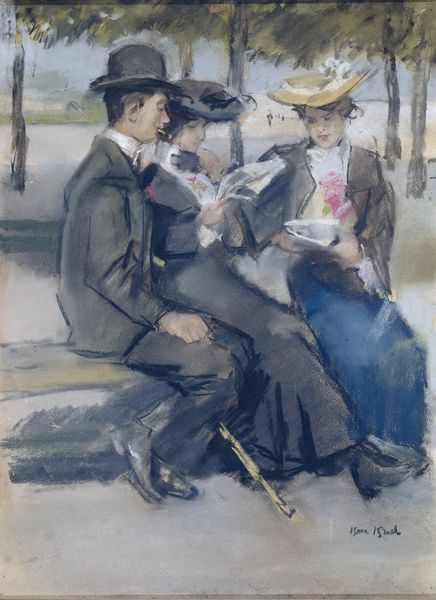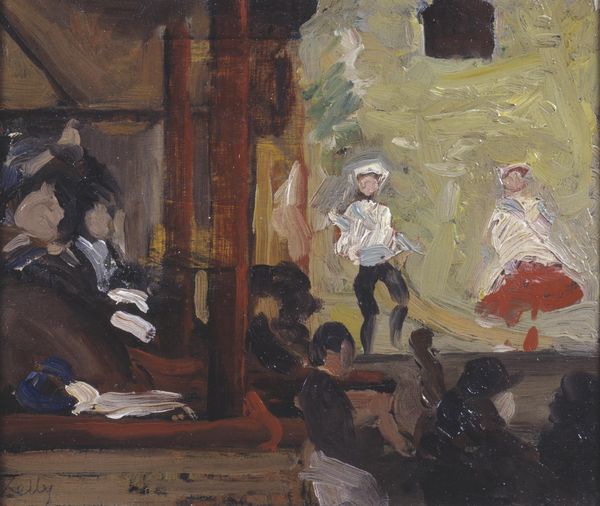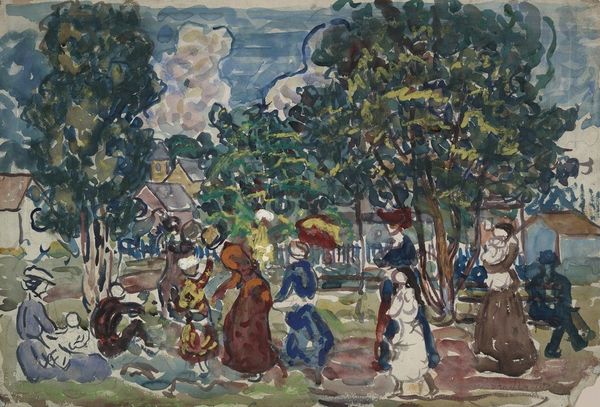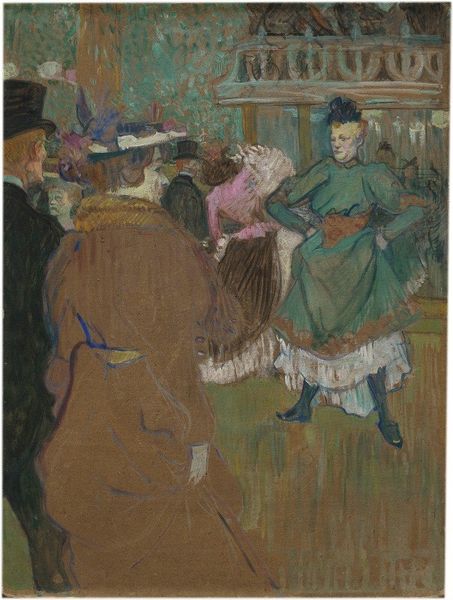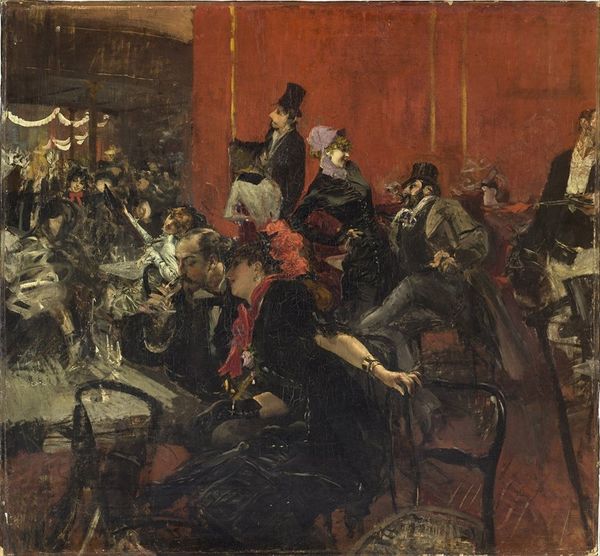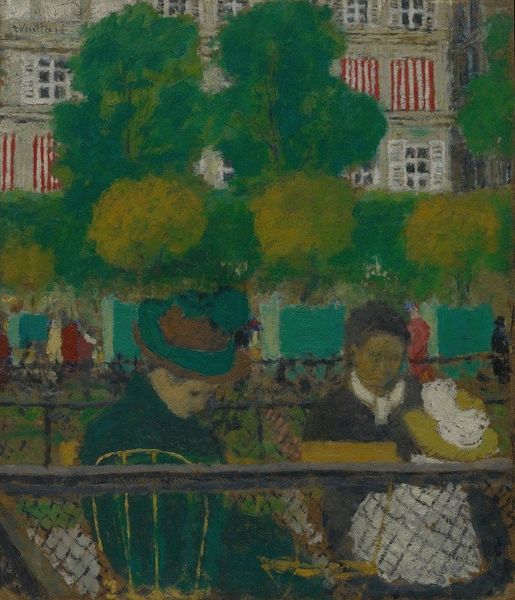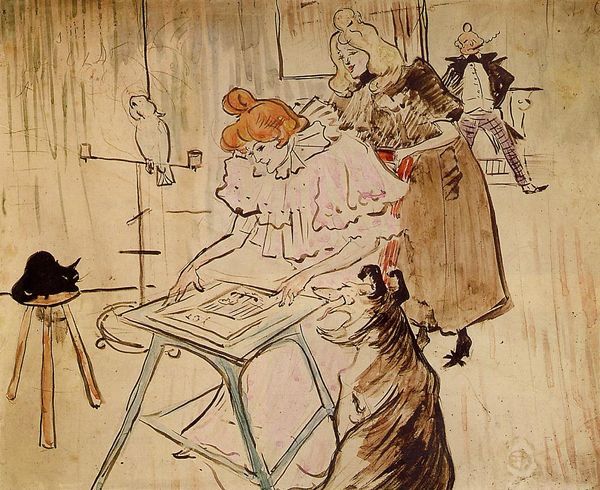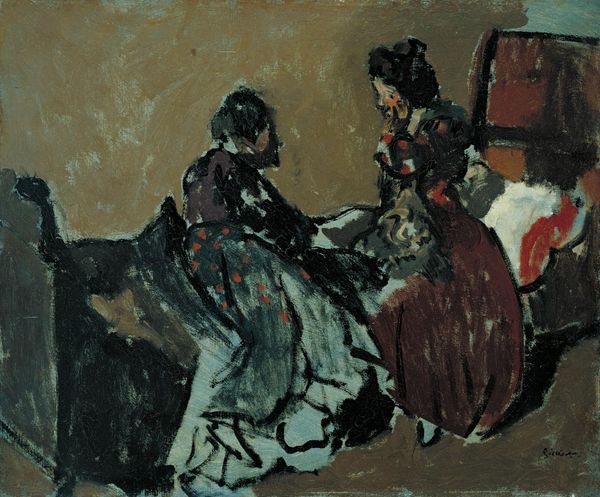
Dimensions: 36 x 27 cm
Copyright: Public domain
Curator: What a lovely group portrait, almost melancholic in its atmosphere. Editor: Yes, it evokes a certain pensive mood, doesn't it? We are looking at "The Bandini Sisters," painted by Silvestro Lega around 1890. Currently, it resides at the Museum of Modern and Contemporary Art of Trento and Rovereto, in Italy. What strikes me immediately is the arrangement; it seems to portray the complex dynamics within a group of women and their domesticity. Curator: Absolutely. Considering Lega’s background, rooted in the Macchiaioli movement, the material rendering interests me. Notice the loose brushwork and how that informs the garments: thick, tangible woolen fabric suggesting a direct relationship to materials. These weren't women of leisure; their clothes speak of utility. The doll is especially suggestive; is it factory made or handcrafted? These things indicate the nature of commodity exchange within their lives. Editor: That’s a great observation. It's easy to forget the social dynamics reflected in a seemingly simple portrait. The act of grouping portraits like this wasn’t just a sentimental gesture; it was a way of defining social position and familial bonds. Think about where such a painting might hang – probably not in a public institution at this time. Private homes were sites of cultivating identities that upheld class structures and bourgeois aspirations. Curator: The parasol sitting off to the side speaks to those aspirations. And beyond subject matter, look at how Lega treats the paint itself. Oil paint allowed artists of the late 19th century to create varied textures. He emphasizes this capacity by using thick impasto to catch light, further objectifying the scene and reminding viewers of the artist’s hand through physical strokes, turning something intimate and everyday into a spectacle. Editor: And this performative dimension goes hand in hand with what's not there; this piece omits signs of a truly modernized, industrialized society and evokes a rural atmosphere of a bourgeois society still dependent upon its lands. The subdued colors—mostly dark tones—might suggest restraint dictated by the societal rules the Bandini sisters lived by. Curator: Precisely. Lega's decision to emphasize the textures of everyday materials places the tangible processes of creating and possessing objects at the center, making a powerful statement about domestic economies, skill and labor. Editor: It highlights the intersection of material culture, social identity, and art as a cultural symbol. Well, it’s certainly given me a deeper understanding of the multiple levels this portrait operates on. Curator: Me too. Seeing art this way always enriches the experience.
Comments
No comments
Be the first to comment and join the conversation on the ultimate creative platform.
